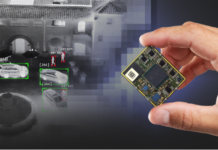
Fujitsu and Atmonia ehf., announced signing of an agreement regarding conduct of joint research to accelerate catalysts development for the clean production of ammonia, leveraging on high-performance computing (HPC) and AI technology.
As the world races to achieve carbon neutrality, ammonia represents a promising alternative to fossil fuels as an energy source that does not emit CO2 when burned and is easier to transport than hydrogen. The two companies will conduct high-speed quantum chemical calculations using HPC and AI technologies to accelerate the selection and optimization of new catalytic materials for sustainable ammonia production.
Based on the results of this joint research, the two companies ultimately aim to establish a clean ammonia production method as a basis for power generation and hydrogen energy and to contribute to the discovery of new materials to achieve a carbon-zero future.
Background and Challenges
Ammonia offers a potentially promising alternative to fossil fuels and engines that run on ammonia are already available. However, the emission of large amounts of CO2 during industrial processes to produce it remains a major challenge. Ammonia is currently produced on an industrial scale using the Haber-Bosch(1) process, which relies on hydrogen sourced from fossil fuels. Retrofitting the industrial process to use hydrogen sourced from electrolysis of water is possible. However, this is a more energy intensive route and does not fit well with the intermittent nature of renewable sourced electricity (such as solar/wind) as the Haber-Bosch process requires a continuous source of hydrogen to maintain operation of the downstream processes, which in turn requires uninterrupted source of electricity.
In addressing this issue, Atmonia has been conducting research on innovative methods to produce ammonia by only using water, nitrogen from air, and clean electricity. To develop new catalysts that can produce ammonia using protons from water and nitrogen from air, Atmonia aims to further expand and improve the efficiency of its research in catalysts for ammonia production by conducting various tests to simulate chemical reactions using quantum chemical calculations.
Outline of the joint research
Within the joint research, the two companies will leverage HPC technology and AI technology for scientific discovery(2) developed by Fujitsu, as well as simulating data on ammonia production accumulated by Atmonia to conduct high-speed quantum chemistry simulations of a wide range of catalysts. The research will focus on the development of technologies for the discovery of new materials that can reduce the time required for selecting catalytic materials and optimizing surface structures(3).
By identifying new catalysts for electrochemical nitrogen reduction reaction, the two companies aim to promote a carbon-free next-generation energy carrier that contributes to the goal of realizing carbon neutrality.
1. Period : April 13, 2022 to March 31, 2023
2. Responsibilities of the two companies :
Fujitsu
– Develop technology for high-speed simulation to discover new catalysts using HPC technology for quantum chemistry simulation.
– Develop AI technology for the discovery of new materials, and new catalyst candidates for ammonia synthesis.
Atmonia
– Provide data from simulations and experiments on catalyst candidates and reaction environments for the nitrogen reduction reaction.
– Provide methodology for examination of catalyst search, interpretation method, and know-how for selection of simulation methods.
– Verification and evaluation of the developed technology for the discovery of new materials.
Future Plans
The two companies will work to establish a clean ammonia production method, where the ammonia can be used as sustainable fertilizer, fuel for combustion and energy carrier, promoting efficient methods for the discovery of new materials with the ultimate goal to contribute to efforts to achieve zero carbon emissions.
Fujitsu will further leverage technologies to accelerate chemical simulations developed during this joint research as well as AI technology and principles from Materials Informatics(4), to support companies that develop new materials.



















